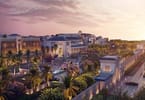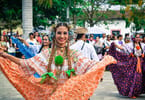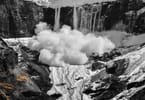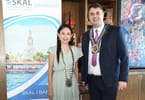The Netherlands’ second biggest metropolis on the Nieuwe Maas river, is a veritable open-air gallery of modern, post-modern and contemporary construction. It’s a remarkable feat for a city largely razed to the ground by WWII bombers. Rebuilding has continued unabated ever since with ingenuity and vision.
Many travelers’ only glimpse of Rotterdam is through the train window and route from Paris, Brussels and Amsterdam. But with a palpable energy, creative spirit and urban regeneration that are cementing its status as one of Europe’s hippest, most happening destinations, Rotterdam city makes an eye-opening stopover with some 170 nationalities calling it home.
From cutting edge contemporary galleries to one of the oldest museums in the Netherlands, Rotterdam has a diverse collection of art and it’s not just confined to museums – you´ll find outdoor sculptures, installations and street art spread throughout the city.
Architecture: This city is an in-your-face contrast to old-world Europe, with its angular glass-clad buildings and ever-changing skyline. Having been bombed flat during WWII, Rotterdam quickly transformed itself and, as hope springs eternal, sprouted a flurry of modern buildings, cementing itself as an architecturally trailblazing city. Wander around Rotterdam and you’ll see examples of architectural styles spanning post-WWII to the present day.
Central Station: The stunning revamp of the Centraal Station was completed in March 2014 to cope with a significant rise in the number of passengers. Viewed from the north aspect it has a modest transparent glass front while the south entrance is a striking slanted roof with the original clock and station sign.
Most bizarre sight: Designed by architect Piet Blom and built between the late 1970s and early ’80s, this innovative series of toppled and tilted yellow-and-grey cubes paved the way for modern architecture in Rotterdam. Each house in the Overblaak Development was built to resemble a tree and together they represent a forest. One of the apartment owners has turned his into a museum for public viewing. You can peek inside Kubus Museum-House to see just how a house tilted at a 45° angle and resting on a hexagonal pylon really works, and admire the custom-built furniture.
Eye-popping recent openings include the Markthal Rotterdam, the country’s inaugural indoor food market. Its extraordinary inverted-U-shaped design incorporates glass-walled apartments arcing over the food hall’s fantastical 40m-high fruit- and vegetable-muraled ceiling and scores of artisan stalls and eateries.
Erasmus Bridge: The Erasmus Bridge, nicknamed ‘The Swan’ due to its graceful shape, was designed by architect Ben van Berkel in 1996. It spans 800 metres across the Maas river and has become a symbol of the city.
WHAT TO TAKE AWAY FROM THIS ARTICLE:
- You can peek inside Kubus Museum-House to see just how a house tilted at a 45° angle and resting on a hexagonal pylon really works, and admire the custom-built furniture.
- Viewed from the north aspect it has a modest transparent glass front while the south entrance is a striking slanted roof with the original clock and station sign.
- From cutting edge contemporary galleries to one of the oldest museums in the Netherlands, Rotterdam has a diverse collection of art and it’s not just confined to museums –.






















